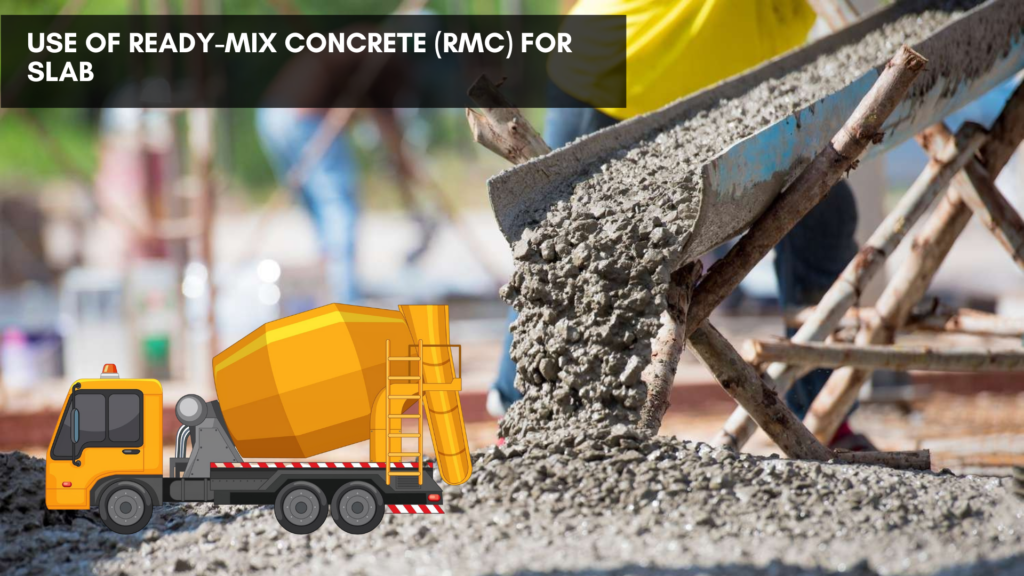Use of Ready-Mix Concrete (RMC) for slab

Using Ready-Mix Concrete (RMC) for slab construction offers several advantages over on-site mixing. Here’s what you need to know:
Advantages of Using RMC for Slabs
- Consistent Quality: RMC is manufactured in a controlled environment, ensuring uniform strength and composition.
- Time-Saving: Since the concrete is pre-mixed, construction time is significantly reduced compared to site-mixed concrete.
- Labor Efficiency: Reduces the need for on-site labor, minimizing errors and speeding up the process.
- Better Strength and Durability: RMC is designed to meet specific strength requirements (e.g., M20, M25, M30 grades), ensuring long-lasting structures.
- Less Material Wastage: Precise mixing reduces wastage of cement, sand, and aggregates.
- Enhanced Workability: RMC contains plasticizers and other admixtures that improve workability, making it easier to place and finish.
- Eco-Friendly: Reduces dust and pollution at the construction site by eliminating on-site mixing.
Procedure for Using RMC in Slab Construction
Site Preparation:
- Ensure proper formwork and reinforcement are in place.
- Provide adequate support to prevent deflection.
- Apply a release agent to the formwork if necessary.
Ordering the RMC:
- Choose the correct grade of concrete (M20, M25, etc.) based on structural requirements.
- Order the required quantity to avoid shortages or excess material.
- Schedule delivery based on site readiness to avoid delays.
Concrete Pouring:
- Pump or manually place the concrete into the slab area.
- Ensure continuous pouring to avoid cold joints.
Compaction:
- Use vibrators to remove air voids and ensure a dense concrete structure.
- Avoid over-vibration, which may lead to segregation.
Finishing:
- Level the concrete using a screed board or power trowel.
- Apply finishing techniques such as floating or troweling for a smooth surface.
Curing:
- Keep the slab moist for at least 7–14 days to ensure proper hydration.
- Use water sprinkling, wet hessian cloths, or curing compounds.
Quality Checks:
- Test cube samples for compressive strength.
- Monitor for cracks and rectify immediately.
Considerations When Using RMC for Slabs
- Timing: Ensure the concrete is poured within 90 minutes of batching to maintain quality.
- Pumpability: Use appropriate slump (workability) for pumping applications.
- Weather Conditions: Avoid pouring in extreme heat or rain without precautions.
- Cost: RMC might be slightly more expensive than on-site mixing, but the benefits outweigh the cost in terms of quality and efficiency.
Would you like recommendations on choosing the right RMC grade for your slab?
Contact us : www.jadehomes.in







